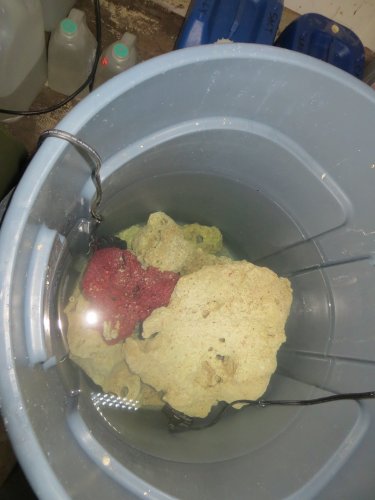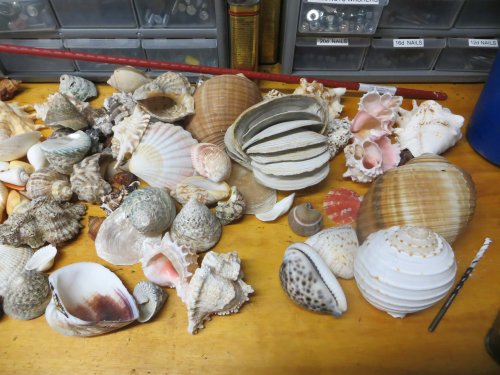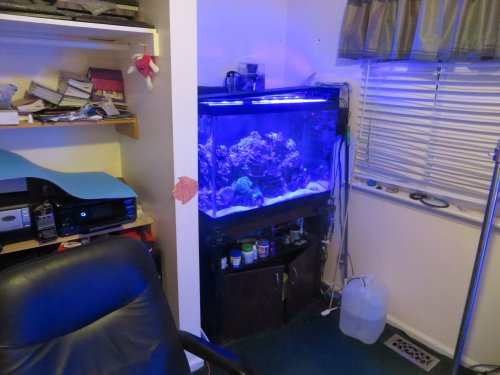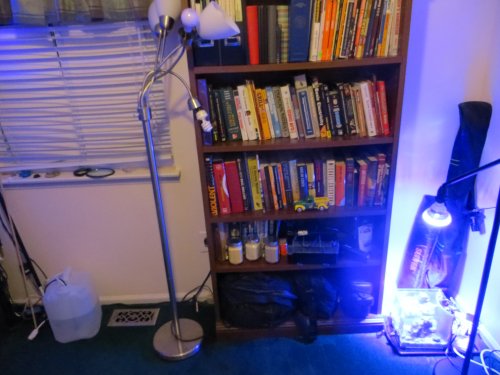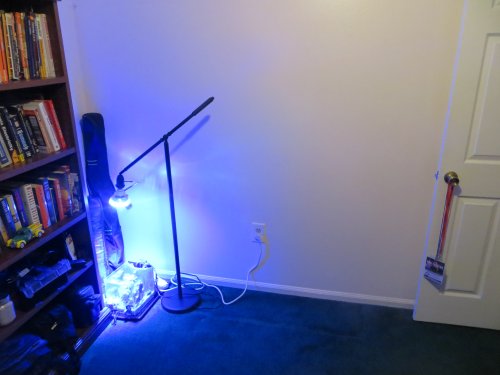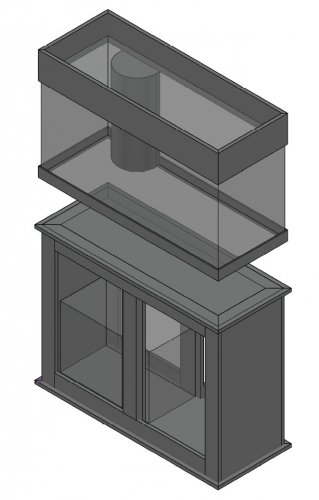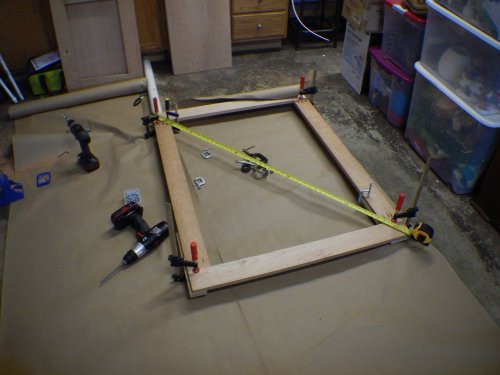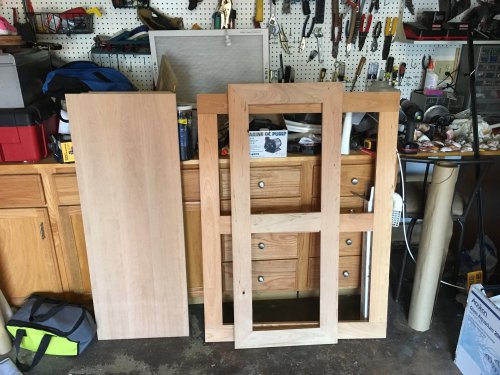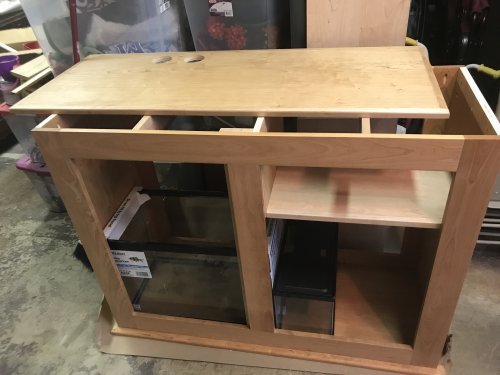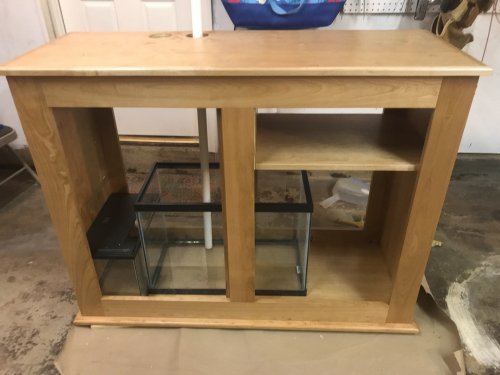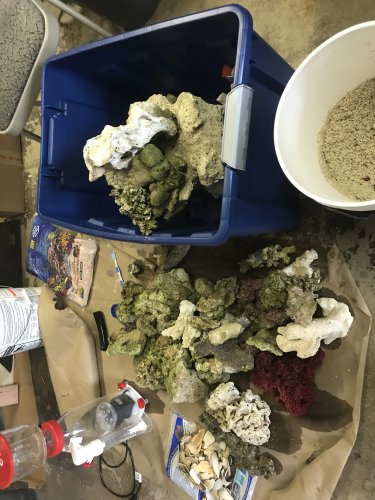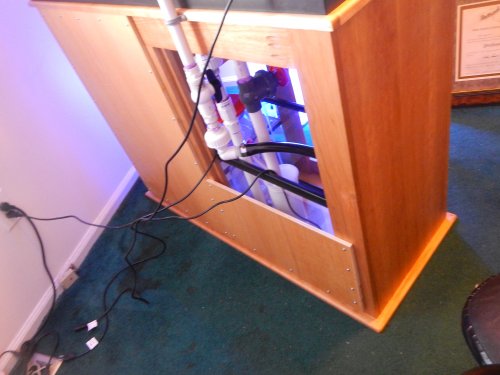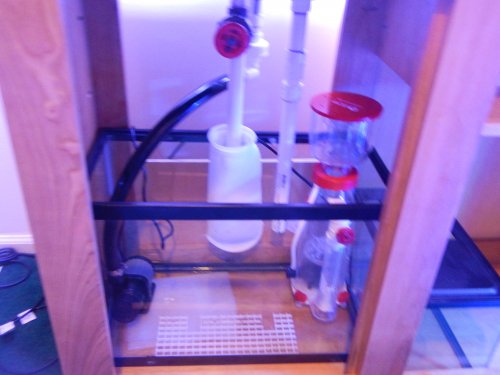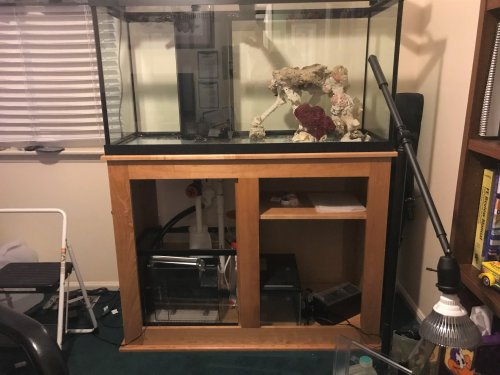Well its time to start a new tale of the tank. This tank will be my first saltwater aquarium that utilizes a sump, not hang on equipment.
I am starting with a 90 Gallon Aqueon reef ready aquarium.
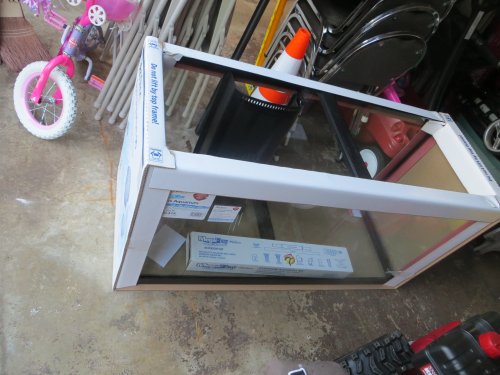
How I arrived at this tank size is kind of funny. I have been eying the lover level slab in my house as a great place to keep a 6' or longer reef tank. But it has been apparent that this would not be possible in the near future (grandkids play there, and visitors sleep there). Last week I gave up on that idea and decided to go with a 3 or 4 foot wide tank in the space I had. A three foot aquarium would be a better fit, but I wanted a 4 foot tank for my yellow tang, which would mean removing a table and a book case.
I like the new waterbox aquariums than recently came out. But they really too expensive, but I was mulling over the possibility of a 3 or 4 foot one. I knew there would be one at Aquatic Experience and went to check it out. It was this 3'x2' reef ready with stand, sump, and plumbing, used for 3 days and for sale at a reasonable discount, although still expensive.
I took this picture of the tank and sent it to my wife by message to ask permission first.
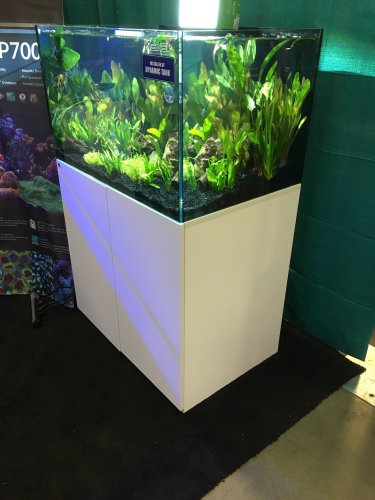
It was sold by the time she got back to me. But it helped me decide I didn't want a tank with a center fame. I put that thought on hold as they raffled off a reef ready tank with a center frame and stand and canopy. I didn't win. (p.s. Call when you really want something!)
Now Trio was manning the NJRC booth, and found out at the last moment that he won a raffle for a 90 gallon reef ready fish tank. Long story short, I ended up taking it home, center brace and all.
I am starting with a 90 Gallon Aqueon reef ready aquarium.

How I arrived at this tank size is kind of funny. I have been eying the lover level slab in my house as a great place to keep a 6' or longer reef tank. But it has been apparent that this would not be possible in the near future (grandkids play there, and visitors sleep there). Last week I gave up on that idea and decided to go with a 3 or 4 foot wide tank in the space I had. A three foot aquarium would be a better fit, but I wanted a 4 foot tank for my yellow tang, which would mean removing a table and a book case.
I like the new waterbox aquariums than recently came out. But they really too expensive, but I was mulling over the possibility of a 3 or 4 foot one. I knew there would be one at Aquatic Experience and went to check it out. It was this 3'x2' reef ready with stand, sump, and plumbing, used for 3 days and for sale at a reasonable discount, although still expensive.
I took this picture of the tank and sent it to my wife by message to ask permission first.

It was sold by the time she got back to me. But it helped me decide I didn't want a tank with a center fame. I put that thought on hold as they raffled off a reef ready tank with a center frame and stand and canopy. I didn't win. (p.s. Call when you really want something!)
Now Trio was manning the NJRC booth, and found out at the last moment that he won a raffle for a 90 gallon reef ready fish tank. Long story short, I ended up taking it home, center brace and all.



